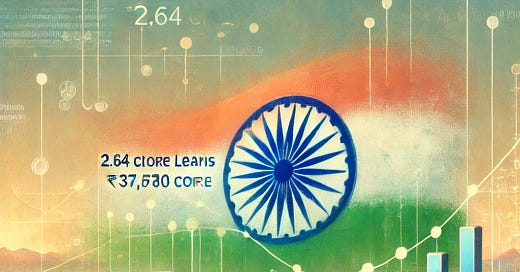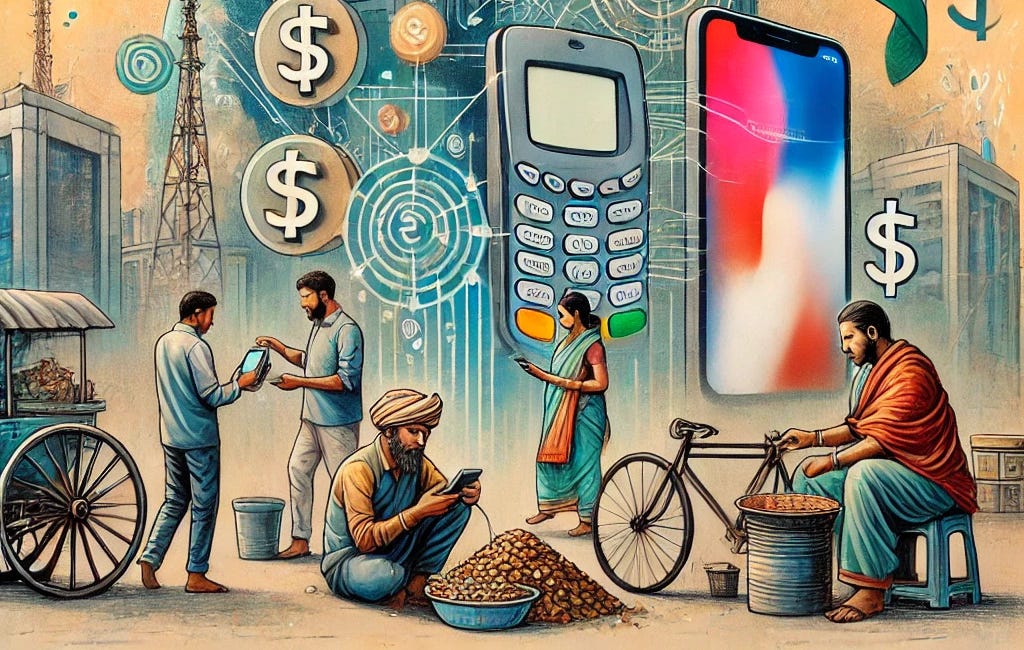Digital Lending in India: Rapid Growth and Emerging Challenges
Collaboration between regulators, industry players, and consumer advocacy groups will be vital in creating a framework that promotes innovation while safeguarding the interests of borrowers.
Digital Lending in India: Rapid Growth
The digital lending sector in India has experienced remarkable growth in recent years, as evidenced by the latest data from the Finance Industry Development Council (FIDC). In the first quarter of fiscal year 2025 (April-June 2024), digital lenders disbursed 2.64 crore loans worth ₹37,676 crore. This represents a significant increase from the previous year, highlighting the growing popularity and accessibility of digital lending platforms. The average ticket size during this period was ₹12,997, marking a 16 per cent rise in the first quarter of the current financial year compared to the same quarter in the previous year. This growth indicates not only a surge in the number of loans being disbursed but also an increase in the value of each loan, reflecting a broader demand for higher credit amounts.
Factors Driving Growth
Several factors have contributed to the rapid expansion of digital lending in India:
Increased smartphone penetration and internet connectivity: With a growing number of people accessing the internet via smartphones, digital lending platforms have become easily accessible.
Government initiatives promoting digital financial services: Government programmes such as Digital India and financial inclusion initiatives have boosted the adoption of online financial services.
Growing demand for quick and convenient credit solutions: Borrowers are seeking faster, more convenient options for obtaining loans, and digital lending meets this demand efficiently.
Advancements in technology enabling faster credit assessments: AI and machine learning models have enhanced credit assessments, allowing for quicker decision-making and reduced human intervention.
Benefits of Digital Lending
Digital lending platforms offer several advantages over traditional lending methods:
Faster loan processing: Applications can be completed and approved within minutes or hours, rather than days or weeks.
Improved accessibility: Borrowers in remote areas can access credit without visiting physical bank branches.
Lower operational costs: Digital processes reduce overhead expenses for lenders.
Data-driven decision making: Advanced algorithms can assess creditworthiness using alternative data sources.
Emerging Risks and Challenges
While the growth of digital lending is promising, it also brings several risks and challenges that need to be addressed.
a.) High Interest Rates
One of the primary concerns surrounding digital lending platforms is the high interest rates charged to borrowers. Many digital lenders operate outside the purview of traditional banking regulations, allowing them to impose interest rates significantly higher than those offered by banks. This practice can lead to a debt trap for vulnerable borrowers who may not fully understand the terms of their loans.
b.) Questionable Recovery Measures
Reports of unethical and aggressive loan recovery practices have emerged as a significant issue in the digital lending space. Some lenders have been accused of using intimidation tactics, harassing borrowers and their contacts, and violating privacy norms to recover debts. These practices not only cause distress to borrowers but also undermine the credibility of the entire digital lending ecosystem.
c.) Data Privacy Concerns
Digital lenders collect and process vast amounts of personal and financial data from borrowers. This raises concerns about data privacy and security, especially given the potential for data breaches or misuse of sensitive information. Ensuring secure handling of data is essential to maintain trust in digital lending platforms.
d.) Regulatory Challenges
The rapid growth of digital lending has outpaced regulatory frameworks, creating a gap in oversight. This lack of comprehensive regulation has allowed some unscrupulous players to exploit borrowers and engage in predatory lending practices.
Regulatory Response
To address these challenges, the Reserve Bank of India (RBI) has introduced guidelines aimed at regulating digital lending activities. These measures include:
Mandating direct disbursement of loans to borrowers' bank accounts: Ensures transparency in loan disbursement.
Prohibiting the use of third-party accounts for loan transactions: Prevents misappropriation of funds.
Requiring transparent disclosure of all fees and charges: Protects borrowers from hidden costs.
Establishing grievance redressal mechanisms for borrowers: Provides a formal system to resolve disputes and complaints.
Digital Frauds and Hacking—rising concerns
Digital fraud and hacking are growing concerns, especially for less tech-savvy individuals who often fall prey to phishing scams. In these deceptive schemes, users think they are making legitimate payments, but their sensitive information is stolen, leading to their money being diverted into fraudulent accounts. While digital transactions offer convenience, they also expose many to these risks. Even those who aren’t active borrowers are vulnerable, as increasingly sophisticated hackers exploit fear and greed, particularly targeting senior citizens. This underscores the urgent need for enhanced security measures and greater awareness.
Lessons from Microfinance in India
The history of microfinance institutions (MFIs) in India, particularly in states like Andhra Pradesh, serves as a stark reminder of the risks involved when lending to vulnerable populations without proper regulation. In the early 2000s, microfinance was lauded as a groundbreaking approach to alleviating poverty. However, by 2010, the sector had plunged into crisis. Key issues such as exorbitant interest rates, sometimes reaching 60% annually, and aggressive recovery tactics, including verbal and physical harassment, brought the industry under scrutiny. Over-indebtedness, resulting from multiple loans to the same borrowers without adequate credit checks, led to severe financial stress, and in some tragic cases, even suicides. Women, often the primary recipients of microfinance loans, bore the brunt of these exploitative practices, further highlighting the dark side of unchecked financial initiatives.
Parallels with Digital Lending Today
In the current digital lending landscape, while loan amounts tend to be smaller and the promise of manageable EMIs seems appealing, many of the same concerns from the microfinance crisis linger. High effective interest rates, though not always immediately apparent, can compound over time, leaving borrowers with unmanageable debt. Default risks persist, especially among vulnerable populations, and data privacy remains a growing issue as lenders gain access to vast amounts of personal information. Furthermore, regulatory frameworks have struggled to keep pace with the rapid expansion of digital lending, leading to gaps in oversight that unscrupulous players can exploit. The need for caution, ethical practices, and robust regulation in this space cannot be overstated, particularly given the lessons from the past.
Summing Up and Looking Forward
The digital lending sector in India shows tremendous potential for growth and financial inclusion. However, it is crucial to address the emerging risks and challenges to ensure a balanced and sustainable ecosystem. Stricter regulations, improved transparency, and responsible lending practices will be essential in building trust and protecting consumers as the industry continues to evolve1.
As the digital lending landscape matures, collaboration between regulators, industry players, and consumer advocacy groups will be vital in creating a framework that promotes innovation while safeguarding the interests of borrowers.
Citations
[1] RBI Guidelines on Digital Lending
[2] Digital MSME Lending in India
[3] Navigating the Digital Lending Boom
[4] Challenges in Microfinance Regulation
[5] Digital Lending and Financial Inclusion
[6] Exploitation in Microfinance
India's Fintech Revolution: A New Era of Innovation, Inclusion and Cybersecurity.
Prime Minister's Address at the Global Fintech Fest 2024






Thanks for inputting so much time, effort and energy. That’s how the KBS CHRONICLE is supposed to be like.👍